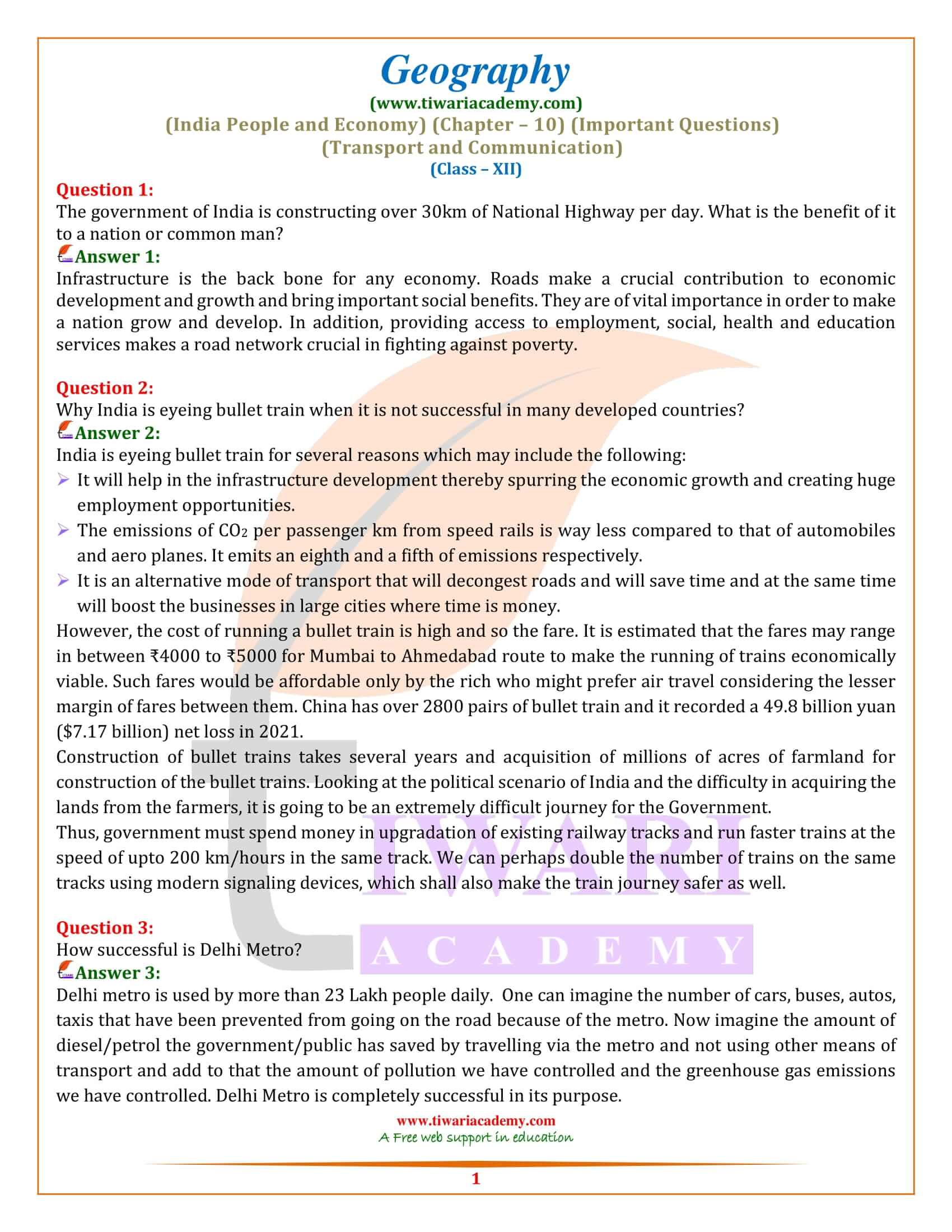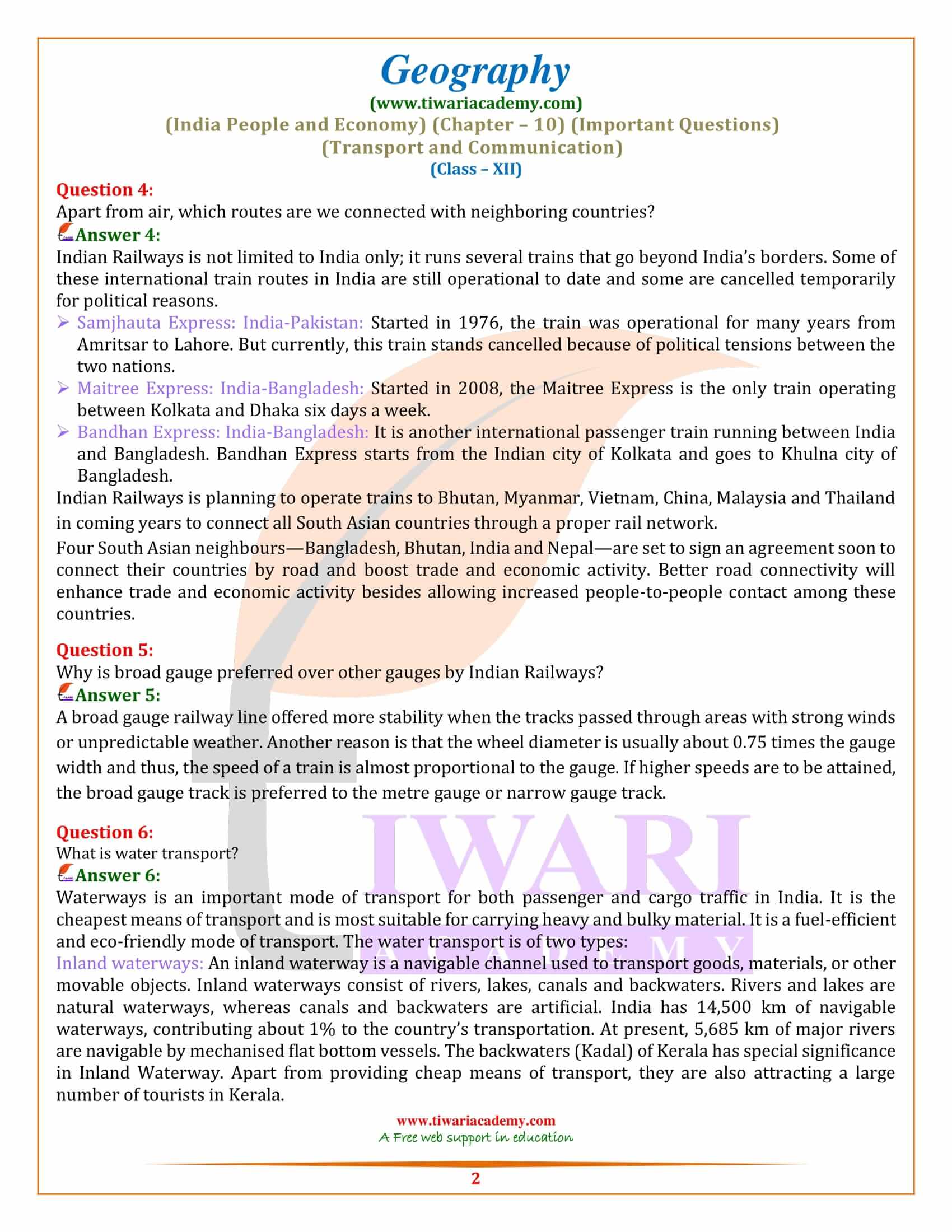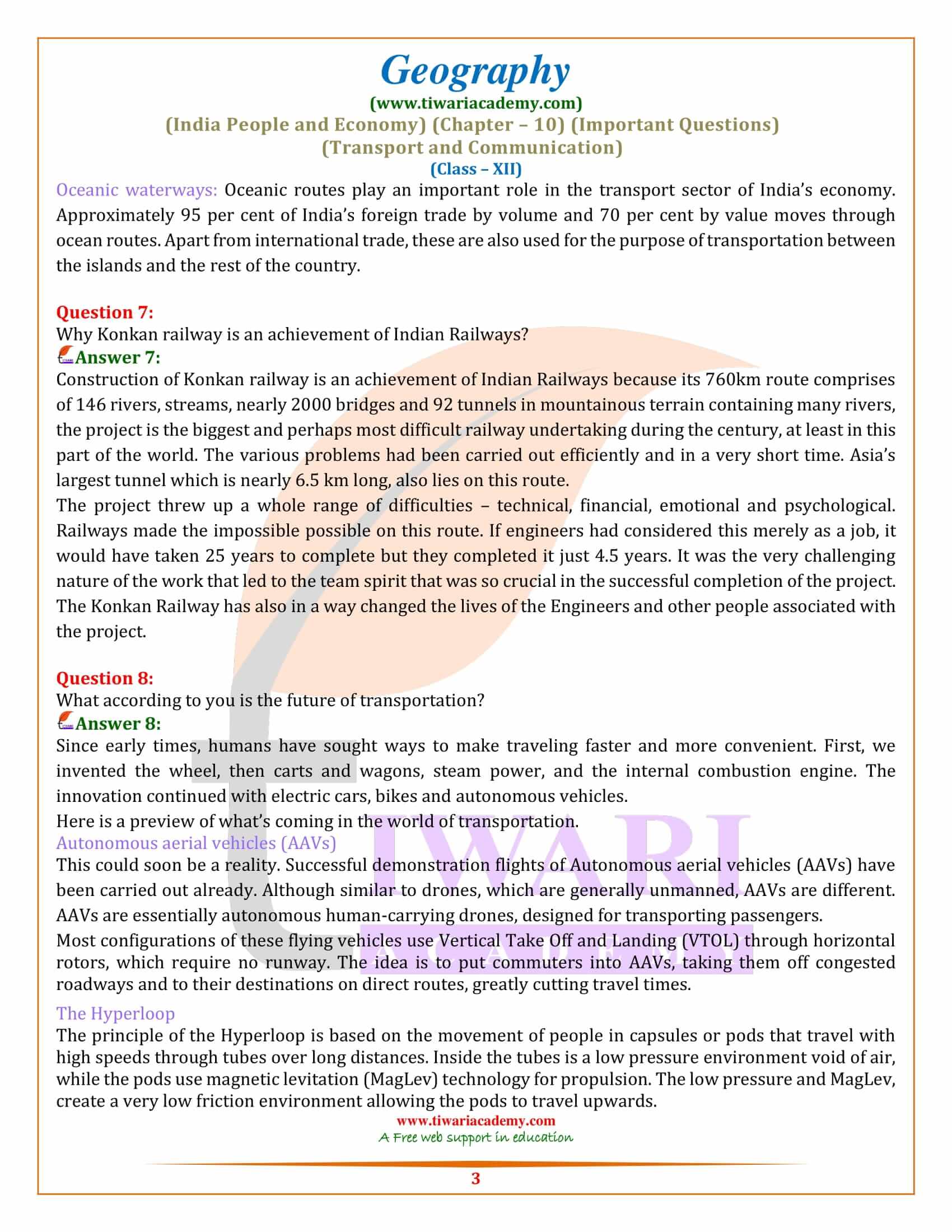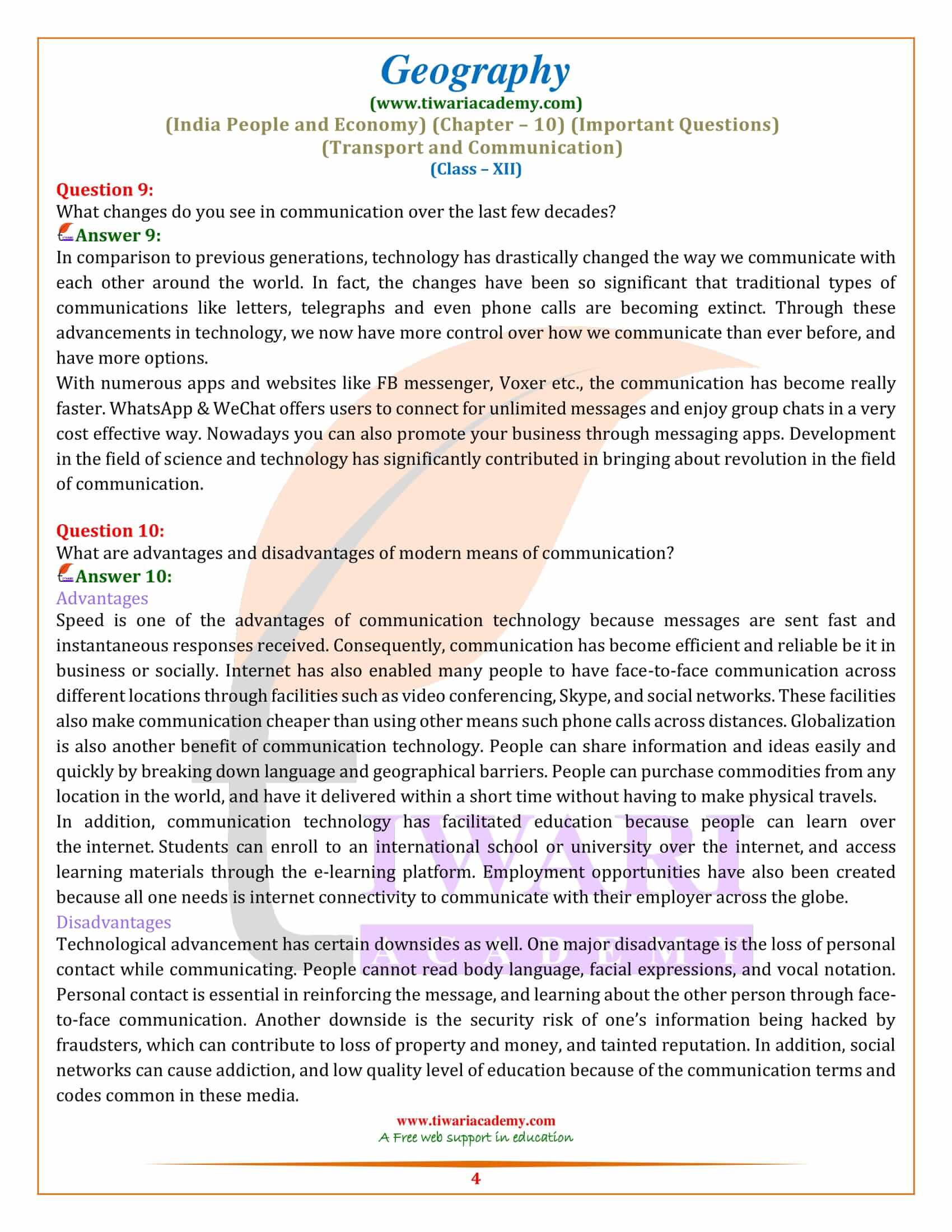Class 12 Geography Part 2 Chapter 10 Important Questions of Transport and Communication with simplified explanation for the upcoming exams. Get here class 12 Geography chapter 10 extra questions to revise the book India People and Economy during the exams.
Class 12 Geography Chapter 10 Important Questions
Class 12 Geography Chapter 10 Important Extra Question Answers
The government of India is constructing over 30km of National Highway per day. What is the benefit of it to a nation or common man?
Infrastructure is the back bone for any economy. Roads make a crucial contribution to economic development and growth and bring important social benefits. They are of vital importance in order to make a nation grow and develop. In addition, providing access to employment, social, health and education services makes a road network crucial in fighting against poverty.
How successful is Delhi Metro?
Delhi metro is used by more than 23 Lakh people daily. One can imagine the number of cars, buses, autos, taxis that have been prevented from going on the road because of the metro. Now imagine the amount of diesel/petrol the government/public has saved by travelling via the metro and not using other means of transport and add to that the amount of pollution we have controlled and the greenhouse gas emissions we have controlled. Delhi Metro is completely successful in its purpose.
What is water transport?
Waterways is an important mode of transport for both passenger and cargo traffic in India. It is the cheapest means of transport and is most suitable for carrying heavy and bulky material. It is a fuel-efficient and eco-friendly mode of transport. The water transport is of two types:
Inland waterways: An inland waterway is a navigable channel used to transport goods, materials, or other movable objects. Inland waterways consist of rivers, lakes, canals and backwaters. Rivers and lakes are natural waterways, whereas canals and backwaters are artificial. India has 14,500 km of navigable waterways, contributing about 1% to the country’s transportation. At present, 5,685 km of major rivers are navigable by mechanised flat bottom vessels. The backwaters (Kadal) of Kerala has special significance in Inland Waterway. Apart from providing cheap means of transport, they are also attracting a large number of tourists in Kerala.
Oceanic waterways: Oceanic routes play an important role in the transport sector of India’s economy. Approximately 95 per cent of India’s foreign trade by volume and 70 per cent by value moves through ocean routes. Apart from international trade, these are also used for the purpose of transportation between the islands and the rest of the country.
Why Konkan railway is an achievement of Indian Railways?
Construction of Konkan railway is an achievement of Indian Railways because its 760km route comprises of 146 rivers, streams, nearly 2000 bridges and 92 tunnels in mountainous terrain containing many rivers, the project is the biggest and perhaps most difficult railway undertaking during the century, at least in this part of the world. The various problems had been carried out efficiently and in a very short time. Asia’s largest tunnel which is nearly 6.5 km long, also lies on this route.
The project threw up a whole range of difficulties – technical, financial, emotional and psychological.
Railways made the impossible possible on this route. If engineers had considered this merely as a job, it would have taken 25 years to complete but they completed it just 4.5 years. It was the very challenging nature of the work that led to the team spirit that was so crucial in the successful completion of the project. The Konkan Railway has also in a way changed the lives of the Engineers and other people associated with the project.
What according to you is the future of transportation?
Since early times, humans have sought ways to make traveling faster and more convenient. First, we invented the wheel, then carts and wagons, steam power, and the internal combustion engine. The innovation continued with electric cars, bikes and autonomous vehicles.
Here is a preview of what’s coming in the world of transportation.
Autonomous aerial vehicles (AAVs)
This could soon be a reality. Successful demonstration flights of Autonomous aerial vehicles (AAVs) have been carried out already. Although similar to drones, which are generally unmanned, AAVs are different. AAVs are essentially autonomous human-carrying drones, designed for transporting passengers.
Most configurations of these flying vehicles use Vertical Take Off and Landing (VTOL) through horizontal rotors, which require no runway. The idea is to put commuters into AAVs, taking them off congested roadways and to their destinations on direct routes, greatly cutting travel times.
The Hyperloop
The principle of the Hyperloop is based on the movement of people in capsules or pods that travel with high speeds through tubes over long distances. Inside the tubes is a low pressure environment void of air, while the pods use magnetic levitation (MagLev) technology for propulsion. The low pressure and MagLev, create a very low friction environment allowing the pods to travel upwards.





